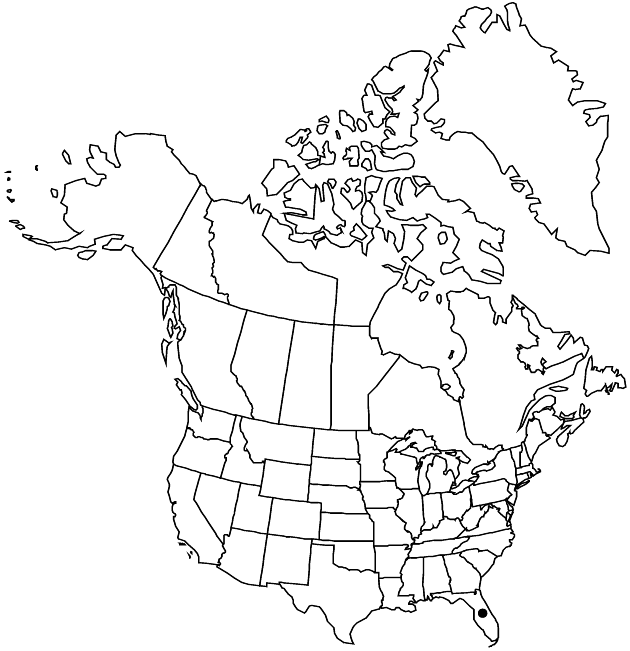Annuals, 5–30 cm; herbage spicy-scented. Stems decumbent to erect, glabrous. Leaves linear, 15–35 × 1–2 mm, margins with 3–5 pairs of setae, faces glabrous (abaxial densely dotted with round oil-glands ca. 0.2 mm). Heads borne singly or in condensed, cymiform arrays. Peduncles 5–25 mm. Involucres cylindric to narrowly fusiform. Phyllaries coherent (falling together), linear or linear-oblanceolate, 5–7 × 1–2 mm (dotted with scattered, oval oil-glands 0.2–0.3 mm). Ray florets 5; corollas 3.5–4.2 mm. Disc florets 4–6; corollas 2.2–2.5 mm (2-lipped). Cypselae 3–3.5 mm (pericarps darkening, not swelling, ovules abortive), strigillose to short-pilose; pappi of 2 (ray) or 5 (disc) slender, antrorsely scabrid, aristate scales 2–2.5 mm, sometimes with additional shorter scales or bristles. 2n = 3x = 36.
Phenology: Flowering Sep–Dec.
Habitat: Roadsides
Elevation: 0–50 m
Discussion
Pectis ×floridana is a triploid hybrid between P. glaucescens (2n = 48) and P. prostrata (2n = 24). The hybrids have been observed where the parental taxa grow together in roadside habitats in southern Florida. At the type locality, the hybrids were nearly as common as the parentals. Meiosis in the hybrids is very irregular; resulting pollen grains are malformed and variable in size and apparently all sterile. No fruits have been observed. Regeneration of the hybrids from season to season apparently requires new hybridization events.
The hybrids superficially resemble Pectis linearifolia from which they differ in having spicy-scented rather than lemon-scented herbage, longer peduncles, and strongly carinate phyllaries that cohere at the bases and fall together as a group.
Selected References
None.
